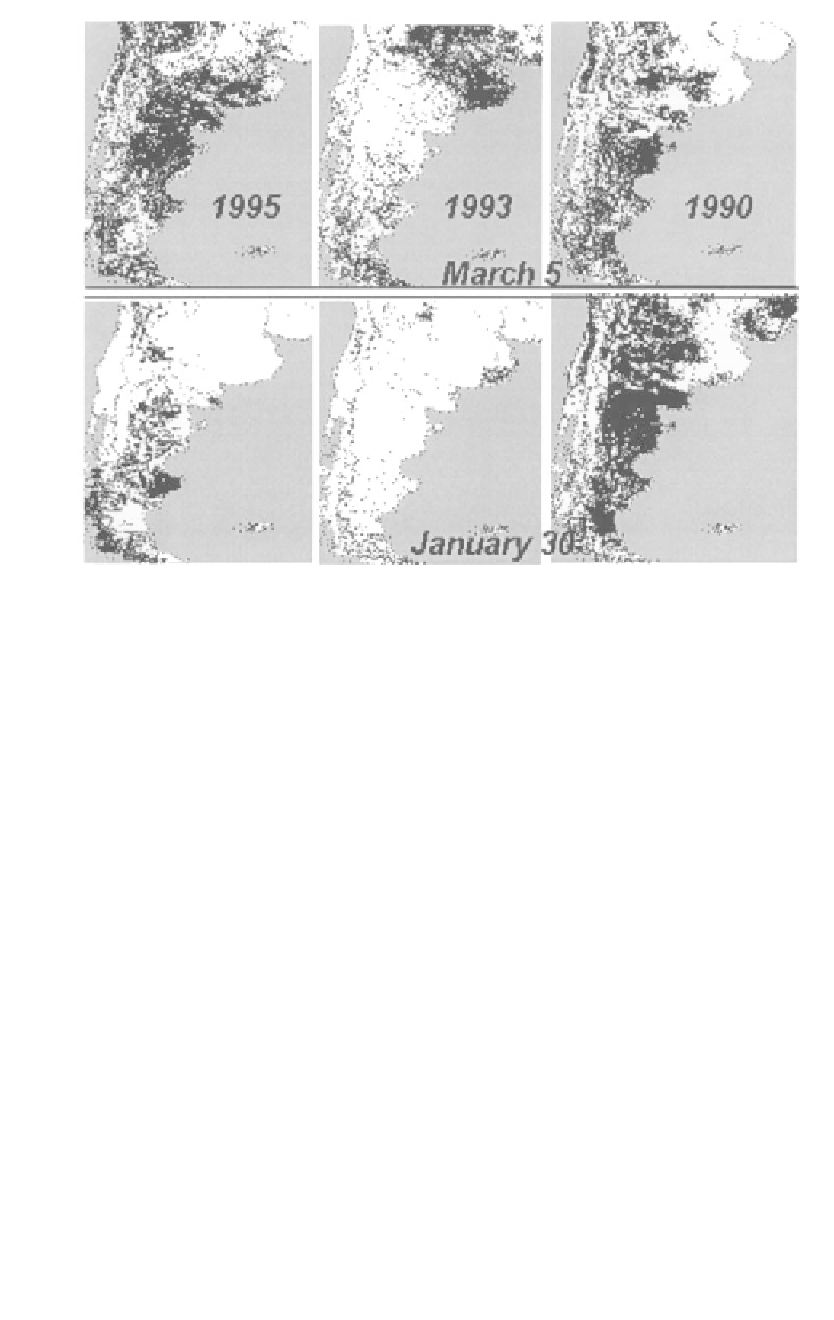Agriculture Reference
In-Depth Information
1
2
3
4
5
6
7
8
9
10
11
12
13
14
15
16
17
18
19
20
21
22
23
24
25
26
27
28
29
30
31
32
33
34
35
36
37
38
39
40
41
42
43
44
45
46
[86],
Line
——
11.
——
Norm
* PgEn
[86],
and data discussed in this chapter are delivered on real-time basis (every
Monday) and are available on the Web (
http://orbitnet.nesdi.noaa.gov/
crad/sat/vci).
The data can detect global and regional vegetation health,
moisture and thermal conditions, and fire risk potential, which are all
related to droughts. An important part of this process is to develop a close
cooperation with users and to receive their feedback on the performance of
these products. Encouraging comments from various users from different
co
untries have been received.
The National Environmental Satellite, Data and Information Service
(N
ESDIS;
www.nesdis.noaa.gov)
provides two- to four-month-long hands-
on
(on-site) training on using this technology. This includes access to satel-
lit
e data, hardware, and software. The users are required to match their
co
untry's conventional data with satellite-based products for validating the
pr
oducts and to develop new applications based on mutual interests. An-
ot
her way of interaction with users is a long-term cooperation program.
A
mong recent projects, the most successful cooperation, which led to the
de
velopment of new PC-based data processing system and AVHRR-based
cr
op yield models, was with China, Kazakhstan and Israel (supported by
the U.S. Agency for International Development), and with Poland (sup-
ported by U.S.-Poland binational fund).



































Search WWH ::

Custom Search